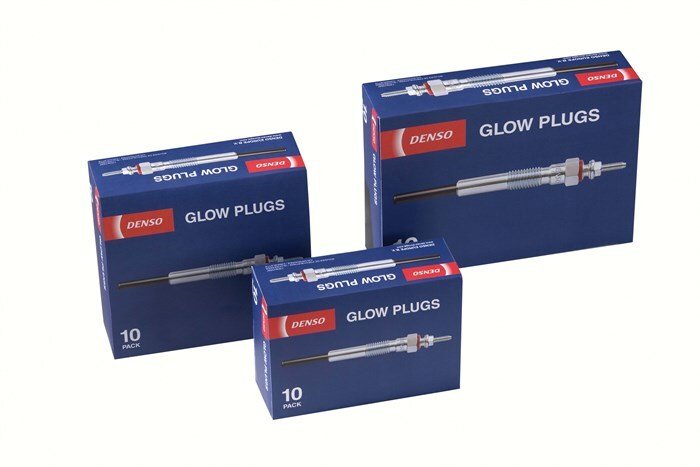Glow plugs and emissions: your questions answered

1. What’s the link between glow plugs and emissions?
In a diesel engine, combustion is achieved by compressing the air in the combustion chamber. The compressed air raises the temperature, fuel is added to initiate the combustion cycle, powering the engine.
During the combustion process, if the combustion cycle does not meet the required temperature, not all of the fuel will be burnt. The unburnt fuel becomes carbon particles, which are released into the atmosphere via the exhaust and are harmful for the environment.
In order to avoid this situation, glow plugs are used to heat up the air and ensure the correct temperatures are reached, so all the fuel is burnt and harmful emissions are reduced.
Glow plugs also play another important role in reducing emissions – they provide heat for the diesel particulate filter (DPF) at regular intervals, as determined by the engine management system (EMS).
All new diesel cars are fitted with a DPF, which prevents toxic soot particles being emitted from a car’s exhaust by collecting them and periodically exposing the particles to high temperatures in order to burn them, turning them into harmless ash. This is known as DPF regeneration.
If a car is driven at high speeds for a long distance, for example on the motorway, the continuous and stable heat flow from the exhaust is sufficient to clean up the DPF. The heat will burn any unburnt remains of the soot particles. But if the car is driven at low speeds, frequently stopping and starting, for example in cities, there is not enough heat for DPF regeneration.
In this case, the ECU activates the glow plugs and injects additional fuel into the engine, which ignites and heats up the DPF, so regeneration can take place.
Problems can sometimes occur if the journey is too short, as the regeneration process may not be completed. The latest glow plugs, such as instant heating plugs, reduce the likelihood of this happening, as they can quickly reach the required temperatures, reducing the regeneration time.
2. What’s the role of the glow plug control unit?
The glow plug control unit interprets information from the engine control unit (ECU) to regulate glow plug operation and optimise engine performance. It decides when glow plugs are in operation and how much electrical current is used (which in turn determines the temperature).
It’s a delicate balance, as if a glow plug is not on for long enough, or does not reach the right temperature, the fuel mixture will not ignite efficiently. But if a glow plug is on for too long, or gets too hot, it can be damaged, which in turn risks damaging the engine.

3. Some glow plugs have extended post-heating functionality. How does this help to reduce emissions?
Extended post-heating functionality means the glow plugs are active before, during and 60-180 seconds after the combustion cycle. This ensures the combustion process is fully completed, with all air and fuel vaporised and no harmful carbon particles released.
4. What is the benefit of using glow plugs made with ceramics as opposed to other materials?
The ceramics used in glow plugs are semiconductors. This means they have both electrical insulating and electrical conducting properties. Ceramic glow plugs have quick heat-up times, long-lasting heat retention and high heat resistance, thus contribute to lower emissions.
5. What is an instant heating double coil glow plug? How do they differ from ceramic glow plugs?
An instant heating double coil glow plug has a heating coil and a regulating coil integrated into its probe. This helps it to heat up faster than a ceramic glow plug, further improving engine efficiency and lowering emissions.

6. How can drivers and workshop technicians ensure good glow plug performance to control emissions?
Drivers:
- Use good quality fuel.
- Look out for black/blue or white smoke coming from the exhaust – take the car to a workshop immediately if this is noticed.
- Look out for the DPF warning light – take the car to a workshop immediately if this is noticed.
Technicians:
- Conduct regular checks of the complete ignition system, including glow plugs, glow plug control module, glow plug relay system, fuel pumps and injectors, EMS and battery.
- Before installing a new glow plug, thoroughly clean the glow plug position to eliminate any carbon deposits.
7. What future developments could impact glow plugs and emissions?
The future of diesel engines and glow plugs is unpredictable – many OEMs have turned away from developing diesel engines in favour of alternative fuels such as electricity. However, in order to make diesel engines more efficient, thinner and longer glow plugs are being developed. Thinner glow plugs result in faster heating times, helping to improve engine starts and reduce emissions through complete combustion and DPF support.

8. About DENSO Glow Plugs
DENSO has long been a leading name in OEM automotive technology. Today, as the largest automotive component manufacturer we pour continuous R&D investment into helping the world’s top car-makers create increasingly responsive, efficient and reliable vehicles.
DENSO Aftermarket has an all-makes, OEM quality glow plug programme. From superlative start-up performance to extended post-heating temperatures, DENSO Glow Plugs offer complete choice. The programme encompasses all current glow plug technologies including single coil, double coil, extended post-heating, ceramic and instant heating.




















































